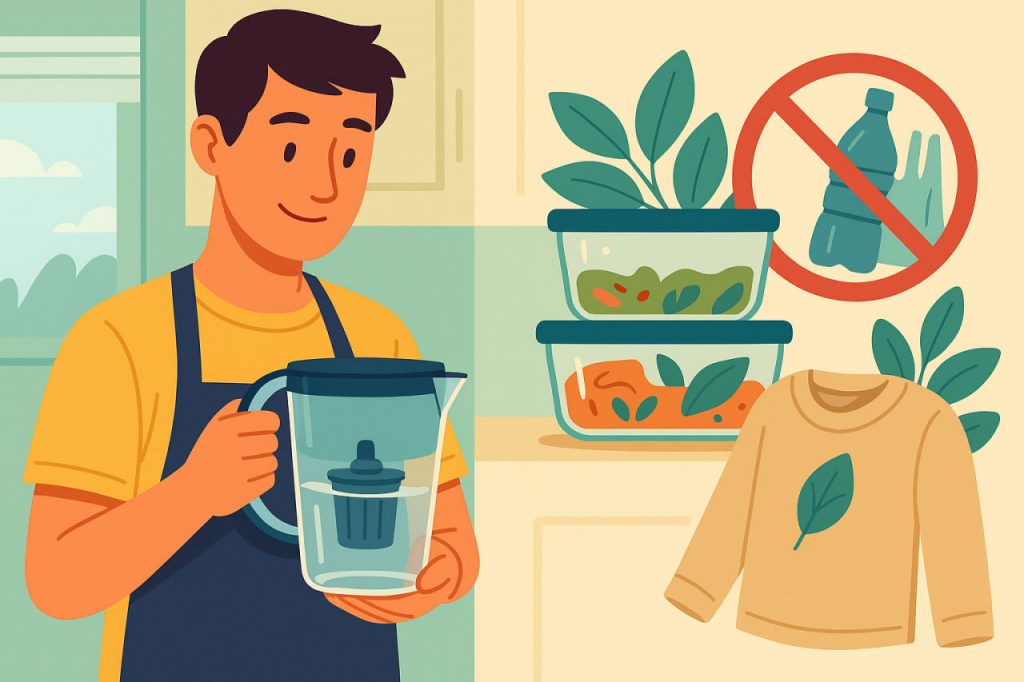Microplastics are tiny plastic particles smaller than 5 millimeters, while nanoplastics are even smaller, less than 1 micrometer. These particles are found in the air, water, food, and even inside the human body. They enter our systems through drinking water, seafood, processed foods, and inhaled dust. While research is ongoing, evidence suggests they may disrupt metabolism, cause inflammation, and carry toxic chemicals. Therefore, minimizing exposure is an important step toward better health.
Sources of Micro- and Nanoplastics
- Food and beverages – bottled water, seafood, salt, and packaged foods.
- Household dust – fibers shed from synthetic textiles, carpets, and plastics.
- Cosmetics and personal care products – some scrubs, toothpaste, and make-up still contain microbeads.
- Air pollution – plastic particles released from vehicle tires, city dust, and industrial waste.
- Cooking and heating plastics – food containers, bottles, and wrappings release microplastics when exposed to heat.
How to Reduce Exposure
- Choose safe drinking water
- Prefer filtered tap water instead of bottled water, which often contains more microplastics.
- Use high-quality filters (carbon or reverse osmosis) to reduce particles.
- Limit plastic food packaging
- Store food in glass, stainless steel, or ceramic containers.
- Avoid heating food in plastic containers or wrapping in microwaves.
- Be cautious with seafood and salt
- Shellfish and sea salt are known to accumulate microplastics. Vary your diet to limit intake.
- Reduce synthetic textiles indoors
- Wash clothes made of polyester and nylon less frequently, or use filters to trap fibers.
- Vacuum and ventilate your home to reduce plastic dust.
- Avoid cosmetics with microbeads
- Check ingredient lists for polyethylene or polypropylene particles. Choose natural scrubs instead.
- Support eco-friendly practices
- Prefer reusable bags, bottles, and containers.
- Reduce single-use plastics, which eventually degrade into microplastics.
How the Body Defends Itself
The body naturally eliminates some particles through digestion, but very small ones (nanoplastics) may pass into tissues and bloodstream. Current research suggests they may increase oxidative stress, damage cells, and disrupt hormone balance. This makes reducing exposure especially important until science better understands long-term risks.
Conclusion
Microplastics and nanoplastics are invisible but widespread pollutants that can enter the body through air, food, and water. While it is impossible to avoid them completely, their impact can be minimized by using filtered water, reducing plastic packaging, avoiding heating food in plastic, choosing natural textiles and cosmetics, and supporting eco-friendly habits. Small lifestyle changes reduce exposure and protect long-term health.
Glossary
- Microplastics – plastic particles smaller than 5 mm.
- Nanoplastics – plastic particles smaller than 1 µm.
- Microbeads – tiny plastic particles once common in cosmetics.
- Oxidative stress – damage to cells caused by free radicals.
- Single-use plastics – disposable plastic products designed for one-time use.


